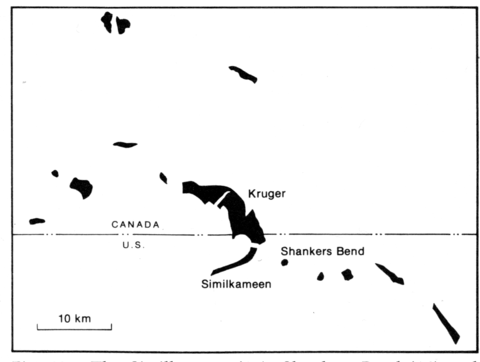stripes
Lying to the south of the Kruger intrusion (031-00-037), in Okanogan County, is an area of alkaline rocks which are marginal to the Similkameen pluton and probably related to the Kruger occurrence. The Similkameen pluton is zoned from granodiorite and quartz monzonite, through monzonite, to alkaline rocks including malignite and syenitic gneiss. Along much of the border of the pluton pyroxenite, malignite and syenite gneiss grade into each other and the granitic rocks. Quartz is sparse or absent in the border rocks and increases towards the centre of the pluton. The malignite consists of large euhedral microclines, hastingsite, augite, biotite and a little nepheline and its alteration products.
FOX, K.F., RINEHART, C.D. and ENGELS, J.C. 1975. K-Ar age of the Similkameen batholith and Kruger alkalic complex, Washington and British Columbia. Journal of Research, United States Geological Survey, 3: 39-43.
RINEHART, C.D. and FOX, K.F. 1972. Geology and mineral deposits of the Loomis Quadrangle, Okanogan County, Washington. Bulletin, Washington Geological Survey, 64: 1-124

